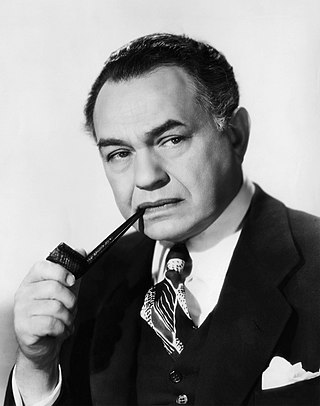
Edward G. Robinson was an American actor of stage and screen, who was popular during Hollywood's Golden Age. He appeared in 30 Broadway plays, and more than 100 films, during a 50-year career, and is best remembered for his tough-guy roles as gangsters in such films as Little Caesar and Key Largo. During his career, Robinson received the Cannes Film Festival Award for Best Actor for his performance in House of Strangers.

Rodney Sturt Taylor was an Australian actor. He appeared in more than 50 feature films, including Young Cassidy (1965), Nobody Runs Forever (1968), The Train Robbers (1973) and A Matter of Wife... and Death (1975).
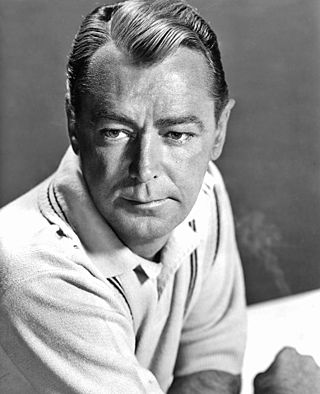
Alan Walbridge Ladd was an American actor and film producer. Ladd found success in film in the 1940s and early 1950s, particularly in films noir and Westerns. He was often paired with Veronica Lake in films noir, such as This Gun for Hire (1942), The Glass Key (1942), and The Blue Dahlia (1946). Whispering Smith (1948) was his first Western and color film, and Shane (1953) was noted for its contributions to the genre. Ladd also appeared in ten films with William Bendix.
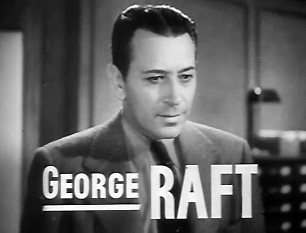
George Raft was an American film actor and dancer identified with portrayals of gangsters in crime melodramas of the 1930s and 1940s. A stylish leading man in dozens of movies, Raft is remembered for his gangster roles in Quick Millions (1931) with Spencer Tracy, Scarface (1932) with Paul Muni, Each Dawn I Die (1939) with James Cagney, Invisible Stripes (1939) with Humphrey Bogart, and Billy Wilder's comedy Some Like It Hot (1959) with Marilyn Monroe and Jack Lemmon; and as a dancer in Bolero (1934) with Carole Lombard and a truck driver in They Drive by Night (1940) with Ann Sheridan, Ida Lupino and Bogart.

Joanne Dru was an American film and television actress, known for such films as Red River, She Wore a Yellow Ribbon, All the King's Men, and Wagon Master.
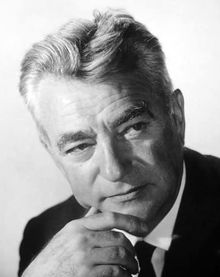
Charles Vidor was a Hungarian film director. Among his film successes are The Bridge (1929), The Tuttles of Tahiti (1942), The Desperadoes (1943), Cover Girl (1944), Together Again (1944), A Song to Remember (1945), Over 21 (1945), Gilda (1946), The Loves of Carmen (1948), Rhapsody (1954), Love Me or Leave Me (1955), The Swan (1956), The Joker Is Wild (1957), and A Farewell to Arms (1957).

This Gun for Hire is a 1942 American film noir crime film directed by Frank Tuttle and starring Veronica Lake, Robert Preston, Laird Cregar, and Alan Ladd. It is based on the 1936 novel A Gun for Sale by Graham Greene.

Frank Wright Tuttle was a Hollywood film director and writer who directed films from 1922 to 1959.

Island of Lost Women is a 1959 American independently made black-and-white castaways melodrama film, produced by George C. Bertholon, Albert J. Cohen, and Alan Ladd, that was directed by Frank Tuttle and released by Warner Bros. Pictures. The film stars Jeff Richards, Venetia Stevenson, John Smith, Alan Napier, Diane Jergens, and June Blair. The film's storyline borrows details from Shakespeare's The Tempest and more contemporaneously the 1956 science fiction film Forbidden Planet.
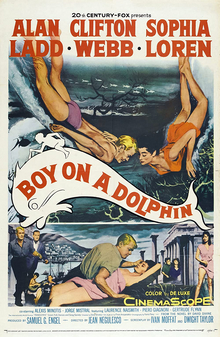
Boy on a Dolphin is a 1957 American romantic adventure film theatrically released by 20th Century-Fox. It is set in Greece and shot in DeLuxe Color and CinemaScope. It was directed by Jean Negulesco and produced by Samuel G. Engel from a screenplay by Ivan Moffat and Dwight Taylor, based on the 1955 novel of the same name by David Divine.

The Black Knight is a 1954 British-American Technicolor adventure film directed by Tay Garnett and starring Alan Ladd as the title character and Peter Cushing and Patrick Troughton as two conspirators attempting to overthrow King Arthur. It is the last of Ladd's trilogy with Warwick Films, the others being The Red Beret and Hell Below Zero based on Hammond Innes' book The White South.
Louis Gilbert Tomei was an American racing driver active during the 1930s and 1940s, and a stuntman active during the 1940s and 1950s.

All the Young Men is a 1960 American Korean War feature film directed by Hall Bartlett and starring Alan Ladd and Sidney Poitier dealing with desegregation in the United States Marine Corps. Poitier plays a sergeant unexpectedly placed in command of the survivors of a platoon in the Korean War. The film explores the racial integration of the American military, centering on the African-American sergeant's struggle to win the trust and respect of the men in his unit.
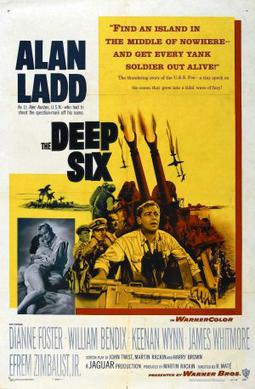
The Deep Six is a 1958 American World War II drama film directed by Rudolph Maté, loosely based on a novel of the same name by Martin Dibner. The film stars Alan Ladd, who co-produced it, William Bendix, Dianne Foster, Keenan Wynn, James Whitmore, Ross Bagdasarian and Efrem Zimbalist Jr. It also marked the film debut of Joey Bishop. It was distributed by Warner Bros.

Perry Lopez was an American film and television actor. His acting career spanned 40 years.

Saskatchewan is a 1954 American Northern adventure film directed by Raoul Walsh and starring Alan Ladd, Shelley Winters and J. Carrol Naish. It was produced and distributed by Universal Pictures. The title refers to Fort Saskatchewan in present-day Alberta, Canada. Shooting took place in Banff National Park not far from the headwaters of the Saskatchewan River.
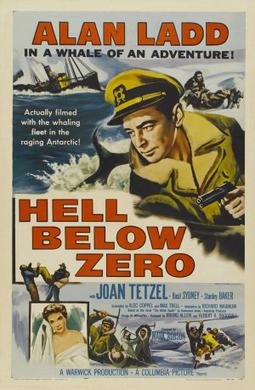
Hell Below Zero is a 1954 British-American adventure film directed by Mark Robson and starring Alan Ladd, Joan Tetzel, Basil Sydney and Stanley Baker. It was written by Alec Coppel and Max Trell based on the 1949 novel The White South by Hammond Innes, and presents interesting footage of whaling fleets in action. It was the second of Ladd's films for Warwick Films.

Illegal is a 1955 American film noir directed by Lewis Allen. It stars Edward G. Robinson, Nina Foch, Hugh Marlowe and Jayne Mansfield. It is the third film adaptation of the 1929 play "The Mouthpiece" by Frank J. Collins, following The Mouthpiece and The Man Who Talked Too Much.
Jaguar Productions was a short-lived production company established by actor Alan Ladd in the 1953. It produced several movies, most of them starring Ladd. The majority of the films were distributed through Warner Bros.

A Cry in the Night is a 1956 American thriller film noir starring Edmond O'Brien, Brian Donlevy, Natalie Wood and Raymond Burr. Based on the 1955 Whit Masterson novel All Through the Night, it was produced and narrated by Alan Ladd and directed by Frank Tuttle.


















